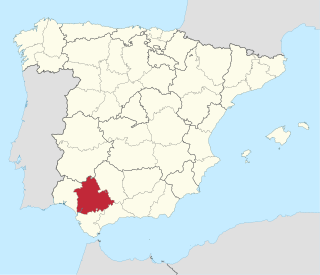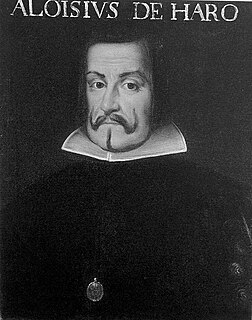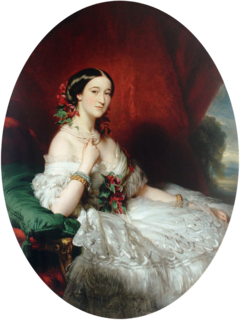
The House of Olivares is a Spanish noble house originating in the Crown of Castile. It is a cadet branch of the House of Medina Sidonia, originating in the sixteenth century.

Spanish nobles are persons who possess the legal status of hereditary nobility according to the laws and traditions of the Spanish monarchy and those who hold personal nobility as bestowed by one of the three highest orders of knighthood of the Kingdom, namely the Order of the Golden Fleece, the Order of Charles III and the Order of Isabella the Catholic. A system of titles and honours of Spain and of the former kingdoms that constitute it comprise the Spanish nobility. Some nobles possess various titles that may be inherited, but the creation and recognition of titles is legally a prerogative of the King of Spain.

The Crown of Castile was a medieval state in the Iberian Peninsula that formed in 1230 as a result of the third and definitive union of the crowns and, some decades later, the parliaments of the kingdoms of Castile and León upon the accession of the then Castilian king, Ferdinand III, to the vacant Leonese throne. It continued to exist as a separate entity after the personal union in 1469 of the crowns of Castile and Aragon with the marriage of the Catholic Monarchs up to the promulgation of the Nueva Planta decrees by Philip V in 1715.
In history and heraldry, a cadet branch consists of the male-line descendants of a monarch or patriarch's younger sons (cadets). In the ruling dynasties and noble families of much of Europe and Asia, the family's major assets—realm, titles, fiefs, property and income—have historically been passed from a father to his firstborn son in what is known as primogeniture; younger sons—cadets—inherited less wealth and authority to pass to future generations of descendants.
Contents
Historically, the house possessed the lordships of Olivares, Seville; Heliche; Albaida del Aljarafe; Camas, Seville; Castilleja de Guzmán; Castilleja de la Cuesta; Salteras; and Tomares. The most prominent member of the House of Olivares was Gaspar de Guzmán, Count-Duke of Olivares, the favourite of Philip IV of Spain.
Olivares is a city located in the province of Seville, Spain. According to the 2016 census (INE), the city has a population of 9480 inhabitants.

The Province of Seville is a province of southern Spain, in the western part of the autonomous community of Andalusia. It is bordered by the provinces of Málaga, Cádiz in the south, Huelva in the west, Badajoz in the north and Córdoba in the east. Seville is the province's as well as the Andalusian autonomous community's capital.

Albaida del Aljarafe is a municipality in Seville. It had a population of approximately 3,084 people in 2013, up from 2,231 in 2005. It has architecture from the Roman and pre-Roman eras. Much of its industry is agricultural, with the main crop being olives.



















